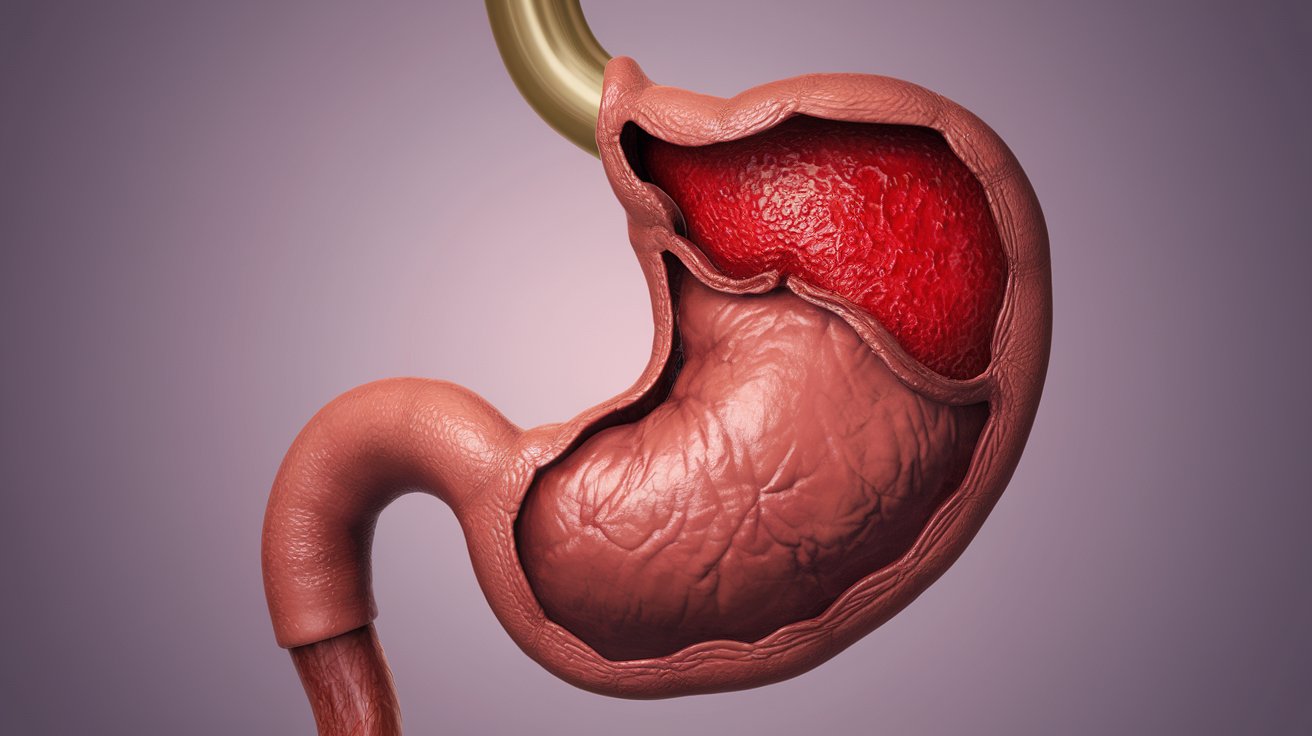
What is Giant Hypertrophic Gastritis? Giant Hypertrophic Gastritis, also known as Menetrier's Disease, is a rare condition that affects the stomach lining. It causes the stomach's mucous membrane to thicken, leading to large folds in the stomach wall. This can result in protein loss, stomach pain, nausea, and swelling. Symptoms often mimic other gastrointestinal issues, making it tricky to diagnose. Causes remain unclear, but some experts believe it might be linked to infections or autoimmune responses. Treatment varies, ranging from medications to manage symptoms to surgery in severe cases. Understanding this condition can help those affected find the right care and improve their quality of life.
Key Takeaways:
- Giant Hypertrophic Gastritis is a rare stomach condition causing thickening and folds in the stomach lining. It can lead to symptoms like nausea, vomiting, and protein loss.
- Diagnosis involves endoscopy, biopsy, and imaging tests to identify and confirm Giant Hypertrophic Gastritis. Treatment options include medications, dietary changes, and surgery for severe cases.
What is Giant Hypertrophic Gastritis?
Giant Hypertrophic Gastritis (GHG) is a rare condition affecting the stomach lining. It causes thickening of the stomach walls and large folds in the mucous membrane. Here are some intriguing facts about this uncommon disease.
-
Rare Condition: GHG is extremely rare, with only a few hundred cases reported worldwide.
-
Also Known As: It’s also called Ménétrier's disease, named after the French pathologist Pierre Ménétrier who first described it in 1888.
-
Symptoms: Common symptoms include nausea, vomiting, abdominal pain, and swelling. Some patients may experience weight loss and anemia.
-
Protein Loss: One of the hallmarks of GHG is protein loss through the stomach lining, leading to low protein levels in the blood.
Causes and Risk Factors
Understanding what causes GHG and who is at risk can help in early detection and management.
-
Unknown Causes: The exact cause of GHG remains unknown, making it a mysterious condition for researchers.
-
Possible Triggers: Some studies suggest that infections, such as cytomegalovirus (CMV) in children, might trigger the disease.
-
Genetic Factors: There may be a genetic predisposition, although no specific genes have been identified.
-
Age Factor: GHG can affect people of any age but is most commonly diagnosed in adults between 30 and 60 years old.
Diagnosis and Detection
Early and accurate diagnosis is crucial for managing GHG effectively.
-
Endoscopy: Doctors often use endoscopy to examine the stomach lining and identify characteristic thickening and folds.
-
Biopsy: A biopsy, where a small tissue sample is taken from the stomach lining, helps confirm the diagnosis.
-
Imaging Tests: Imaging tests like CT scans and MRI can provide detailed pictures of the stomach’s structure.
-
Blood Tests: Blood tests can reveal low protein levels and other abnormalities associated with GHG.
Treatment Options
While there is no cure for GHG, various treatments can help manage symptoms and improve quality of life.
-
Medications: Acid-reducing medications, such as proton pump inhibitors, can help alleviate symptoms.
-
Dietary Changes: High-protein diets may be recommended to counteract protein loss.
-
Intravenous Albumin: In severe cases, intravenous albumin can help replenish lost proteins.
-
Surgery: Partial or total gastrectomy (removal of part or all of the stomach) may be necessary for patients with severe symptoms.
Living with Giant Hypertrophic Gastritis
Managing GHG involves regular medical care and lifestyle adjustments.
-
Regular Monitoring: Patients need regular check-ups to monitor protein levels and stomach health.
-
Support Groups: Joining support groups can provide emotional support and practical advice from others with the condition.
-
Research Participation: Participating in clinical trials can help advance understanding and treatment of GHG.
-
Quality of Life: With proper management, many patients can lead relatively normal lives despite the challenges posed by GHG.
Final Thoughts on Giant Hypertrophic Gastritis
Giant Hypertrophic Gastritis, also known as Ménétrier's disease, is a rare condition that causes the stomach lining to thicken, leading to large folds in the stomach. This can result in protein loss, stomach pain, nausea, and vomiting. While the exact cause remains unclear, some cases link to infections like cytomegalovirus or H. pylori. Treatment often involves medications to reduce stomach acid, dietary changes, and in severe cases, surgery. Early diagnosis and management are crucial to prevent complications. If you experience persistent stomach issues, consult a healthcare professional for proper evaluation. Understanding this condition can help in seeking timely treatment and improving quality of life. Stay informed and proactive about your health.
Frequently Asked Questions
Was this page helpful?
Our commitment to delivering trustworthy and engaging content is at the heart of what we do. Each fact on our site is contributed by real users like you, bringing a wealth of diverse insights and information. To ensure the highest standards of accuracy and reliability, our dedicated editors meticulously review each submission. This process guarantees that the facts we share are not only fascinating but also credible. Trust in our commitment to quality and authenticity as you explore and learn with us.
